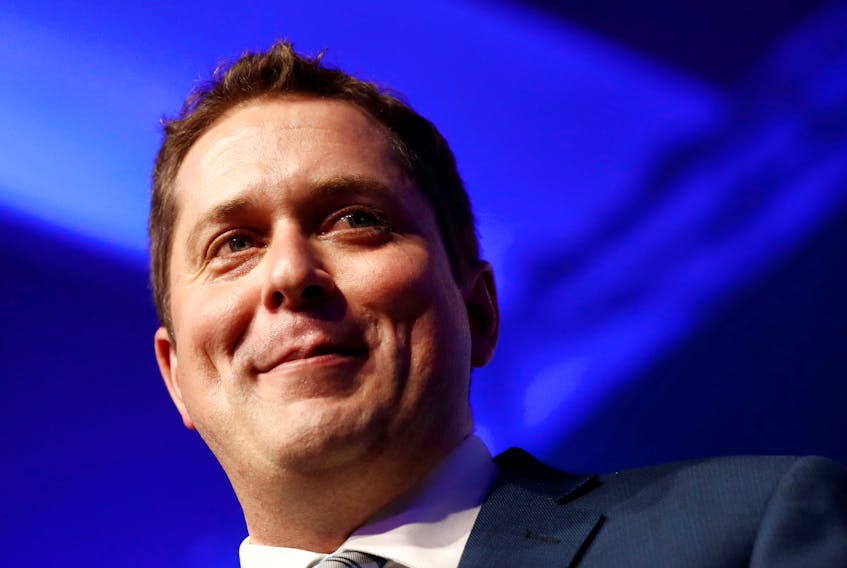
Yes, it is still five months until the vote, but Canada’s Conservatives sit comfortably atop a bulging war chest and every credible poll in the land. Canadians might want to roll the words “Prime Minister Scheer” around their minds just to see how that feels.
The governing Liberals haven’t hit the panic button yet, but they’ve had one installed. Prime Minister Justin Trudeau’s precipitous fall from grace has taken his party and government along for the slide.
And the federal Conservatives are back on their game, spending their pre-writ money effectively like they did when they destroyed Michael Ignatieff and Stephane Dion, and unlike 2015 when they missed the mark.
They’re running ads that reinforce doubts about the prime minister that have crept into voters’ minds in recent months and they answer those doubts with the tagline: “He’s not as advertised.” They’re effective because they strike the nerve exposed by the SNC-Lavalin affair.
Trudeau’s well-built, if not hard-won reputation as a new kind of pol is in tatters.
While the Conservatives buy airtime to try to keep the prime minister’s approval rating in the tank, their leader Andrew Scheer has begun a series of, what the party calls, major policy speeches. We’ve already heard from him on foreign policy and the economy. Yet to come is the long-promised climate change plan which should emerge from a June speech on the environment.
Scheer also has speeches in the works on Confederation and immigration. It seems safe to assume he’ll favour the former but have some problems with the latter.
Canadians don’t need to wait for Scheer’s environment speech to know that his party is four-square behind the full and fruitful development of the nation’s oil and gas reserves. Rather than reducing greenhouse gases by 2030, his economic speech talked about Canada being energy self-sufficient by that date — a laudable goal, no question — but further development of the oil sands figures prominently in the Conservative plan to reach it.
Scheer and the Conservative brain trust know they’ll be out-greened by – in order of magnitude — the Greens, the NDP and the Liberals and they don’t care. They’ll roll out a climate change plan, check the box and move on.
Scheer’s Conservatives are more intent on capitalizing on the economic anxiety abroad in the land than they are worried that their climate change plan will fall short.
Depending on which public opinion research you consult, Canadians whose vote can be earned with a serious response to climate change make up as little as 12 per cent or as much as 30 per cent of the national electorate. These are not Conservative voters, and in this election cycle the party’s not going to waste time, energy or money trying to woo them.
Scheer’s economic speech tells you which pond the Conservatives are fishing for votes — the two-thirds of Canadians who say that once the bills are paid there’s nothing left. The Conservatives’ messages are aimed at Canadians worried about right now, not what if.
If an election were held today, most polls have the Conservatives either on the cusp of, or already in majority government range. But a lot can happen in five months to alter the political equation and a lot has to happen if the Liberals are to snatch re-election from the jaws of self-inflicted ignominious defeat after just one term.
The Liberals’ recovery has to start by pulling the prime minister’s approval rating out of the toilet. Right now he’s about 30 points under water, with 60 per cent of Canadians saying they disapprove of his performance against just 30 per cent who approve. For context or contrast, Donald Trump’s approval rating holds steady at around 40 per cent.
It seems the best the Liberals can come up with to boost their leader’s image are plans to fly him to international events where his job is to look good. They’re also saying a prayer that the SNC-Lavalin affair will fade from memory and that progressive voters, who deserted the party because of it, will come back to the Liberals when the spectre of a Conservative government looks too real.
And that’s about it. The Liberals’ re-election strategy is a wing and a prayer.
RELATED:








